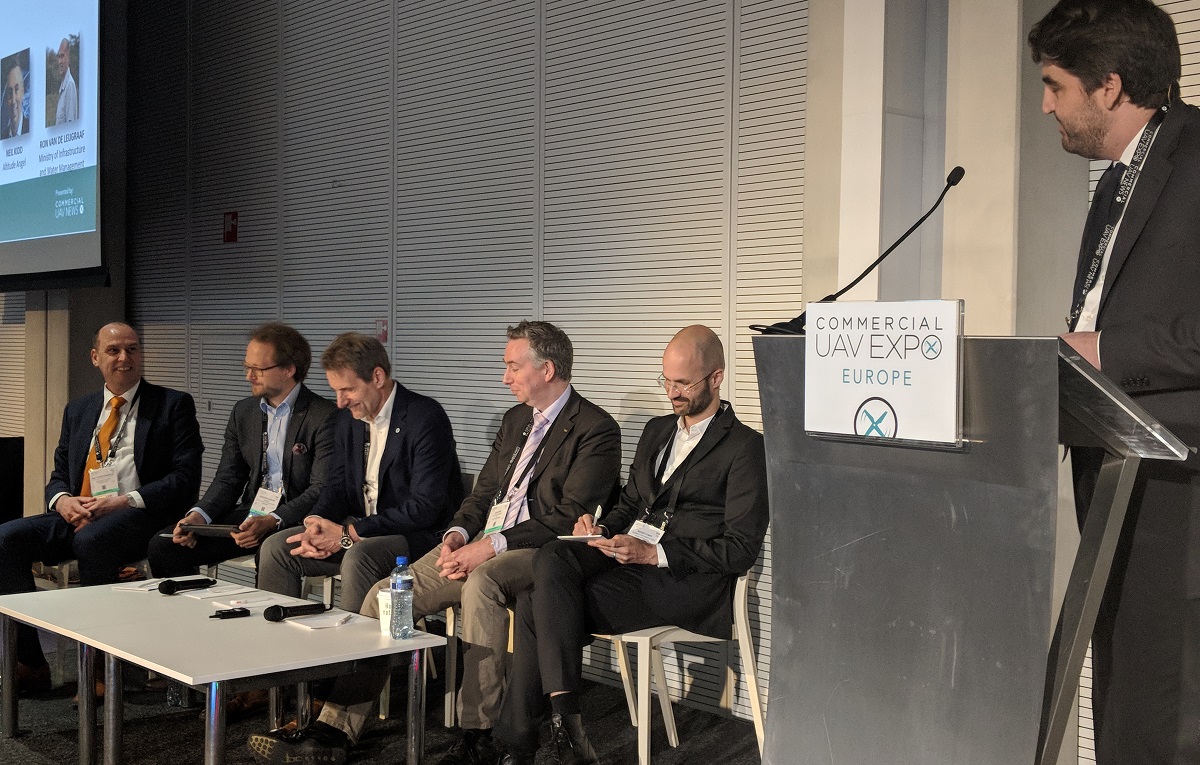A fascinating session about the current state of the regulatory framework in Europe took place at Commercial UAV Expo Europe. Chaired by Alain Siebert of SESAR, it provided and a comprehensive update on U-Space developments and much more.
First we heard from Benoit Curdy from the Global UTM Association who gave us a 30,000 ft view of his organization and then went straight into explaining why the implementation of a common language for unmanned flying machines was as important as humans being able to communicate with each other. The need for the implementation of U-Space and a common set of not only rules but communication protocols and specific actions and reactions would be the key elements needed for a full integration of pan-European regulations.Neil Kidd from Altitude Angel then explained how he is personally helping UK regulators to understand the complexities of drone operations and how he is working hard to understand the requirements of said regulators to allow unmanned vehicles in controlled airspace, flights BVLOS and operations over urban areas. According to him, a one-to-one drone-to-pilot ratio will kill the industry and the solution is in autonomous vehicles, but the process of getting there will be gradual. First there will be allowances and support for remotely-piloted drones and eventually the industry and the regulators will then move to fully autonomous vehicles.Mark Kegelaers from Unifly in Belgium provided a comprehensive history of how do we find ourselves a year from having a pan-European regulation. He narrated with painstaking details the early days when the regulators wanted drones to comply with every single regulation for manned aviation and slowly agreed to reduce or eliminate rules that didn’t make any sense in the unmanned world and did not contribute to the safety of the integration. He expressed his admiration for the work SESAR is doing and how to have an R&D arm of EASA has helped bridge the gap with industry and making sure U-Space reflect the reality of UTM technology available today. He also expressed a high degree of confidence that by the end of next year, Europe will have a unified set of rules that would allow an Italian operator sell and deliver his/her services in Holland or any other European country and vice versa.Sebastian Babiarz from Airmap in Germany gave us a good look into the world of technology providers in a highly regulated environment and used the USA and the FAA as an example of expediency. He cited the 90 days it took to get a waiver to fly over urban areas after the implementation of Part 107 and the way that the FAA and the different stakeholders joined forces and released LAANC (Low Altitude Authorization and Notification Capability) and immediately solved a long standing waiting period that was killing business.Then the opportunity for a regulator to reply came and Ron van de Leijgraaf, representing the Dutch Ministry and Transport, took the microphone and the audience held their breath waiting for the “authorities” to have their say. Ron thanked all his co-panelists for the constructive ideas and then took his time to explain that in manned aviation nothing happens in less than a decade; in fact he mentioned that 15 years was a better average.He told stories about the time when airlines and airplane manufacturers were lobbying for certain changes that took years to be accepted and implemented. He compared the drone industry to a young person eager to get out there and challenge the status quo and he applauded the energy and the passion, but he also explained that the regulator had a huge responsibility reflected in the amazing safety record of commercial aviation and the millions of lives that depend on it.He said that regulators will never catch up with technology and there will always be a gap, but he assured the audience that in this case, the EU was focused on making the pan-European regulation a reality by the end of next year.After Ron’s comments, Alain opened the floor to the audience and the questions revolved mostly around the feasibility of 2019 as a realistic deadline for an EASA regulation covering the entire European community. All the panelists agreed that it was a reality and all indications are there that it will happen.Subscribe
The information you submit will be stored and used to communicate with you about your interest in Commercial UAV News. To understand more about how we use and store information, please refer to our privacy policy.
April 11, 2018
Regulatory Update & U-Space Developments from Commercial UAV Expo Europe















Comments